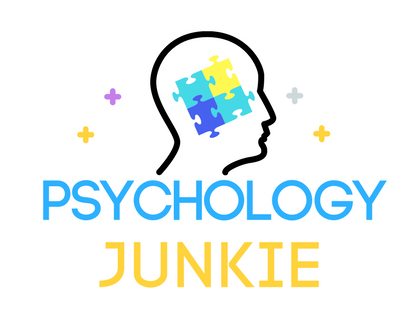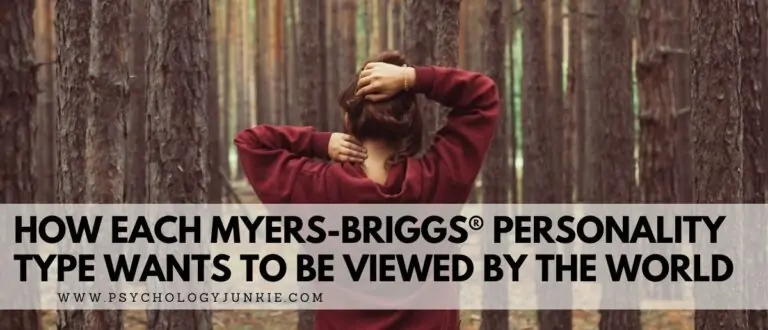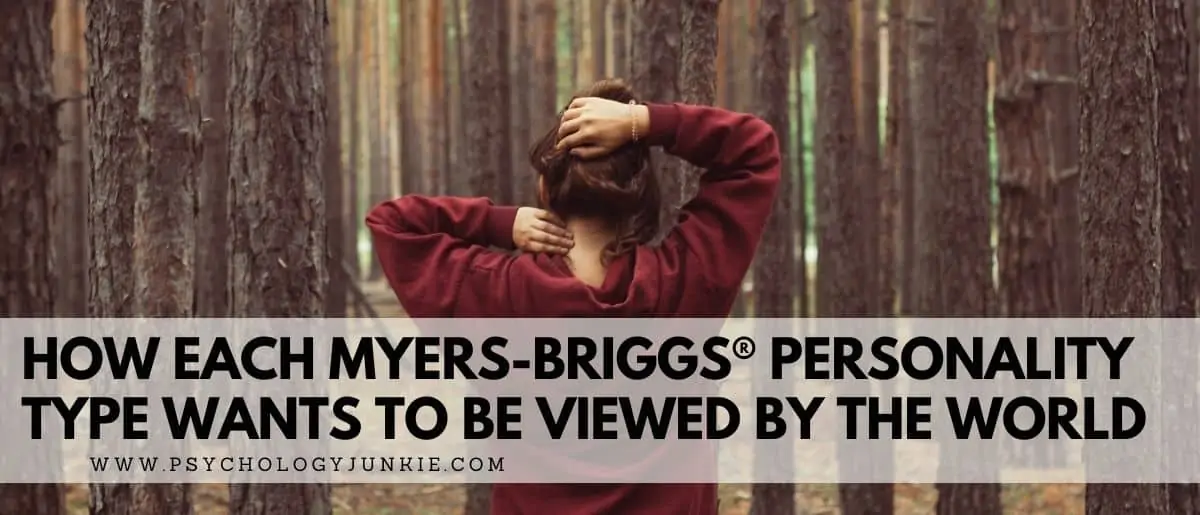The Four Personality Types INFPs Clash with the Most (and How to Connect)
Today I want to talk about INFPs and the types they naturally tend to clash with most. Why does this matter? I’m not trying to sow adversity or drive wedges between people. The goal here is to help us understand WHY we sometimes think other people are just “wrong”, or even why they might think we’re the ones in the wrong.
Sometimes the problem is that someone legitimately is wrong, but a lot of times we just don’t “get” each other. We think that everyone should be like us, and if they’re not, they’re somehow defective. And personalities that are wildly different have even more chances for these kinds of judgment calls to happen.

So let’s get started. INFPs. These are the dreamers, the idealists, the quiet champions of individuality and authenticity. INFPs feel deeply. They’re all about authenticity, meaning, imagination, and depth. They have a natural tendency to see the world not just as it is but as it could be. It’s a beautiful way to live—but let’s face it, it can also be a little lonely.
Over the years as a coach, I’ve seen this play out in countless ways. INFPs pouring their hearts out to someone, only to get a blank stare in return. Or bending over backward to try to find a friend, only to feel unappreciated—or worse, dismissed. It’s not that INFPs are difficult to get along with (far from it). It’s just that their unique way of seeing the world can clash with certain personality types who don’t quite understand where they’re coming from.
So Who Do INFPs Not Get Along With?
According to a survey of over 80,000 people, there are four types INFPs tend to clash with most: ESTPs, ISTPs, ESTJs, and ESFJs. These clashes aren’t necessarily about “bad” types versus “good” types—it’s more about different ways of thinking, feeling, and communicating. You’ve got the sensitive, introspective INFP on one side and the pragmatic, action-oriented personalities on the other. It’s a recipe for misunderstandings—but it’s also an opportunity to learn and grow. (I know, “opportunity to grow” sounds like something you’d read on an inspirational poster, but stick with me!)
The truth is, every clash holds the potential for deeper understanding. So, whether you’re an INFP struggling to make sense of your ESTP coworker, or an ISTP wondering why your INFP friend is still agonizing over something you said two weeks ago, this article is here to help. We’ll unpack why these clashes happen, share insights from real INFPs, and explore how these seemingly opposite types can find common ground. Ready? Let’s dive in.
Not sure what your personality type is? Take our personality questionnaire here. Or you can take the official MBTI® here.

#1 ESTPs – Why INFPs and “The Daredevils” Clash
Let’s talk about ESTPs. These are the thrill-seekers, the “Daredevils” of the personality world. ESTPs love action. They like to be moving, doing, interacting, and responding. I’m married to an ESTP so, believe me, I know. If I want to have a deep conversation with him, it better be while we’re taking a walk, driving somewhere, or playing beat saber (yes, it is possible).
INFPs are more thoughtful, more quiet, introspective, and imaginative. Life is about exploring possibilities, diving into emotions, picking up on nuances that others miss. For INFPs, who crave emotional depth and meaningful connection, being around an ESTP can feel like trying to have a heartfelt conversation while someone’s dragging you onto a roller coaster. It’s dizzying, and sometimes uncomfortable.
The reason these two types clash often boils down to their blind spots. INFPs have a hard time focusing on the details of the moment or reacting quickly to what’s happening around them—that’s their weak spot, or what some call their “Se blind spot.” This doesn’t mean INFPs can’t be good at sports or observation, they certainly can be, but it often takes practice and perseverance.
Meanwhile, ESTPs struggle to understand their own deeper feelings or values, thanks to their “Fi blind spot.” Asking an ESTP to dig into their inner world of emotions might feel (to them) like they’re trying to find a needle in a haystack in the pouring rain with a mariachi band playing in their ear.
If you ask an INFP to react fast, they tend to freeze up or stumble. If you ask an ESTP to explore their emotions, you might get a blank stare or an awkward joke.
Again, this is a trend and a pattern, there are those out there who don’t’ fit the mold 100%.
I’ve seen this dynamic play out in coaching sessions so many times. One INFP client said, “When I try to open up to my ESTP friend about something deep, they either change the subject or start cracking jokes. It’s like they can’t handle feelings.” On the flip side, I’ve had ESTPs tell me they don’t understand why their INFP friends take things so seriously. They want to live in the moment and really be immersed in all they can do and experience.
Conversations between these two types often feel like they’re happening on completely different frequencies. ESTPs thrive on swapping stories, sharing technical how-to’s, arguing (good-naturedly), and cracking jokes. INFPs? They want to dive deep—what does it all mean? How does it feel? What can we imagine together? To an ESTP, this can feel like wading through mud. To an INFP, the ESTP’s lightheartedness can feel dismissive or even fake.
Then there’s the speed factor. ESTPs act fast. They trust their instincts, make snap decisions, and leap into action without overthinking. INFPs, on the other hand, like to take their time. They weigh all the possibilities, consider the emotional impact, and only then make a move. To an ESTP, this can feel like the INFP is dragging their feet. To an INFP, the ESTP might seem reckless or impulsive.
How ESTPs and INFPs Can Connect
But here’s the thing: as different as they are, these two types can actually bring out the best in each other—if they’re willing to meet in the middle. ESTPs can show INFPs how to enjoy the moment and really spot the details that give them a thrill. INFPs can help ESTPs slow down, reflect, and find deeper meaning in their experiences.
Here’s what works:
- For INFPs: The ESTP’s jokes and energy might seem surface-level to you, but that’s their way of connecting. Let yourself enjoy it for what it is.
- For ESTPs: When an INFP starts talking about feelings, resist the urge to deflect. You don’t have to offer solutions or crack a joke—just listen. That’s all they’re asking for.
- For INFPs: Be direct. ESTPs aren’t great at picking up subtle emotional cues. If something’s bothering you, just tell them. They’ll appreciate your honesty.
- For ESTPs: Give INFPs time to think things through. They’re not stalling—they’re being thoughtful, and their insights will probably surprise you if you let them finish.
When these two types figure out how to work together, their differences stop being a problem and start being a strength. ESTPs bring excitement and energy, while INFPs bring depth and meaning. Sure, it takes patience, but the reward is a friendship or partnership that’s as dynamic as it is fulfilling. And honestly? It’s worth the effort.
Find out more about ESTPs here: Your ESTP Cognitive Function Guide
#2 ISTPs – Why INFPs and “The Vigilantes” Clash
ISTPs, or “The Vigilantes,” are reserved, independent, and wildly analytical. They’d rather solve a sudoku puzzle over their morning coffee than listen to an inspiring podcast most of the time. Problem-solving and learning new technical details and facts is inspirational to them!
They’re also the people who would rather figure out how a machine works than sit around talking about feelings. For INFPs, the world of emotions, values, and imagination is everything! So conversation can feel like a mismatch.
Here’s the thing about ISTPs: they’re all about real stuff. Tangible, practical, fix-it-now kind of stuff. INFPs, on the other hand, live in a world of “what ifs” and “wouldn’t it be amazing if…?” So when an INFP tries to pull an ISTP into their imaginative world, the ISTP might freeze up or flat-out check out. It’s not that they don’t care—they just may not see the point.
One INFP told me, “I’ll get so excited about this big idea I’m working on, and they’ll just point out what’s wrong with it. They can’t just meet me in my dreams AT ALL.”
To an ISTP, pointing out flaws is helping. To an INFP, it feels like rejection.
And then there’s the emotional disconnect. INFPs dive deep, and they prioritize their feelings and really pay attention to them. ISTPs? They’re more likely to fix your leaky faucet than open up about their emotions. To an INFP, this can feel like hitting a brick wall. To an ISTP, it’s just not how they operate. When they’re coerced into talking about their feelings, they can get grumpy, agitated, or even stressed. Often, they worry they’ll say the wrong thing.
One ISTP I coached said they felt like talking about feelings was like walking in a minefield, they never knew when they would accidentally cause an emotional “explosion” in the other person.
Conversations can be another minefield. INFPs love brainstorming, dreaming, and exploring abstract ideas. ISTPs love finding logical inconsistencies and focusing on what’s practical. It’s not uncommon for an INFP to get excited about a big, dreamy plan, only for the ISTP to shut it down with a dry, “How would that even work?” The INFP feels dismissed; the ISTP thinks they’re being helpful.
How ISTPs and INFPs Can Connect
Even though these two types are so different, they can actually help each other grow. ISTPs can ground INFPs in reality, while INFPs can show ISTPs the joy of dreaming a little.
Here’s what works:
- For INFPs: ISTPs show love through actions, not words. If they’re fixing something for you, that’s their way of caring.
- For ISTPs: When an INFP shares an idea, hold back on the critique at first. They’re not asking for a debate—they’re sharing something important to them. Try to go along for the ride and point out the good things rather than just focusing on what may not be lining up logically.
- For INFPs: Be clear about what you want. If you’re looking for emotional support, let them know. The clearer you can be, the more they’ll start to “learn” you. Believe me, if they care about you, they ARE trying to figure out how you work.
- For ISTPs: When you feel coerced into talking about feelings that are overwhelming or confusing for you, instead of ad-libbing (if that’s stressful) or shutting down, ask for some time to process. Or tell them you might blurt out your feelings and then need to retract things later as it starts to make sense.
When these two types learn to respect each other’s strengths, they can balance each other in surprising ways. The key is understanding. INFPs need to understand that ISTPs process their thoughts more than their feelings, their logic more than their emotions. Getting into their emotions can feel like opening a Pandora’s box for an ISTP; scary and confusing.
In the same way, ISTPs need to realize that INFPs need to be able to imagine and “dream out loud” just as much as ISTPs need to experiment with their hands in the real world. ISTPs learn through trial and error, and so do INFPs, but it’s in an imaginative context. And for the INFP, emotional data is valuable. It tells us whether we’re in line with our conscience, our values, what matters to us as individuals.
If both types can understand this about each other, they can both start to appreciate each other more.
Find out more about ISTPs: 24 Signs That You’re an ISTP Vigilante
#3 ESTJs – Why INFPs and “The Captains” Clash
Now we’re onto the type INFPs voted as 3rd most likely to clash with them. I call ESTJs “The Captains” because, well, they love to take charge. ESTJs are action-oriented, decisive, and efficient. They organize people, get results, and often seem like they were born to manage something. But for INFPs, this can feel overwhelming—or downright bossy.
One of the biggest challenges is how these two types communicate. ESTJs are blunt. They’ll tell you exactly what they think, no sugarcoating involved. INFPs, on the other hand, tend to be more reflective and sensitive with their words. They think carefully about how what they say might land. To an ESTJ, their level of sensitivity might seem pointless, time-wasting, or overly cautious. To an INFP, the ESTJ’s directness can feel like a verbal slap in the face.
I had an INFP client once say, “Talking to my ESTJ coworker feels like being hit with a firehose of opinions. I’m just trying to share an idea, and they’ve already steamrolled it with ten reasons it won’t work.” Meanwhile, an ESTJ told me, “Why do they have to be so hesitant? Just make a decision already!”
Then there’s the matter of their cognitive functions. ESTJs lead with Extraverted Thinking (Te), which focuses on logic, structure, and getting results. INFPs lead with Introverted Feeling (Fi), which values authenticity, emotions, and following the heart. Te and Fi are like two magnets with opposite poles—they’re drawn to each other, but they can also repel each other.
Here’s where it gets tricky: Fi is the ESTJ’s inferior function, which means they’re often intrigued by it but also unsure how to handle it. They might admire the INFP’s authenticity and depth but also feel skeptical about its reliability. “Feelings can’t solve problems,” is a common refrain I’ve heard from ESTJs. Meanwhile, Te is the INFP’s weaker spot. They’re fascinated by the ESTJ’s decisiveness and organizational skills but find it hard to trust a system that doesn’t prioritize personal values.
How ESTJs and INFPs Can Connect
Even though they have differences, ESTJs and INFPs can create a powerful partnership if they learn to appreciate what the other brings to the table. ESTJs can help INFPs turn their dreams into actionable plans, and INFPs can show ESTJs how to prioritize what matters to them as individuals on a heart-level.
Here’s what works:
- For INFPs: When the ESTJ comes at you with rapid-fire solutions, don’t take it personally. It’s not that they’re dismissing you—they’re just wired to fix things fast. In their mind, they’re trying to help and support you (most of the time).
- For ESTJs: Try softening your approach. INFPs don’t need you to solve everything immediately. Sometimes they just want you to listen and be there for them.
- For INFPs: Be direct about your needs. ESTJs aren’t great at reading between the lines, so if you need time to process or reflect, say so. If you don’t want advice, say so. If they know specifics, they’ll usually try to accommodate those.
- For ESTJs: Recognize that the INFP’s feelings are emotional data – you don’t have to prove or disprove it. Try to make space for it, even though you might feel a compulsion to correct it. If you aren’t sure about something, show curiosity rather than condemnation.
When these two types work together, they can balance each other well. I’ve known so many INFP/ESTJ couples who are happy together and have grown because of their contrasting differences. ESTJs bring structure, INFPs bring depth, and together they can create something meaningful and efficient. Sure, it’s a learning curve, but when they figure it out, it’s a connection worth the effort.
Find out more about this pairing in my article: INFPs and Compatibility with ESTJs and ENTJs
#4 ESFJs – Why INFPs and “The Defenders” Clash
ESFJs are warm, friendly, and pragmatic. They’re like social glue, keeping everything (and everyone) from falling apart. But for INFPs, all that social expressiveness and warmth can sometimes feel… fake. INFPs might see the ESFJ’s people-pleasing tendencies as phony, while ESFJs might find INFPs a bit too self-focused or lost in their head.
One of the biggest sources of tension between these two types is the difference between Fe (Extraverted Feeling) and Fi (Introverted Feeling). ESFJs use Fe to prioritize group harmony, focusing on how everyone else feels and upholding group values. My mother-in-law is an ESFJ and she makes sure everyone knows what’s expected in a situation, reminding people of good manners, tact, and what is right according to her social value system.
INFPs, on the other hand, use Fi to make decisions based on their personal values and emotions. Fi asks, “What feels right to me?” and has a certain anti-authoritarian leaning to it. My INFP friend is quirky, offbeat, says what he thinks even if it’s uncouth, and has a certain rebellious streak blended with compassion.
You can see how this might cause problems.
I had one INFP client tell me, “My ESFJ coworker is always checking in to make sure everyone’s okay, even if they’re clearly not. Like, why ask if you don’t actually want the truth?” The ESFJ, meanwhile, had a completely different take: “The INFP doesn’t even try to be part of the team! They just float off into their own world and leave the rest of us to pick up the slack.”
These clashes often show up in social situations. ESFJs are social chameleons, blending in and trying to create a positive vibe. INFPs, however, don’t really “blend.” They need to be genuine above all else and would rather stand out for who they are than fit into a mold. To an ESFJ, this can come across as self-centered or even “odd,” especially when the INFP’s Ne (Extraverted Intuition) starts firing off quirky, imaginative ideas. Meanwhile, the INFP might see the ESFJ as shallow or overly people-pleasing.
And then there’s the lifestyle differences. ESFJs thrive on structure, traditions, and teamwork, so when the INFP drifts off into their inner world, it can feel like they’re not pulling their weight. They might want them to be more planful, consistent, and by-the-book.
The INFP might feel overwhelmed by the ESFJ’s expectations and wonder why they can’t just relax. They might feel like the ESFJ is trying to force them into a mold that simply doesn’t fit. This can lead to resentment and a feeling of not being appreciated for who they truly are.
How ESFJs and INFPs Can Connect
Yes these two types are wildly different, but they still can complement each other beautifully when they focus on their shared desire to create a better world. ESFJs can help INFPs stay grounded and connected to others, while INFPs can show ESFJs the value of individuality and personal authenticity.
Here’s how to make it work:
- For INFPs: Try to appreciate the ESFJ’s desire to make things pleasant for everyone. It’s not fake—it’s their natural mode of being. They experience emotions in a completely different way than you do, and that’s okay.
- For ESFJs: Give the INFP room to be themselves. You don’t have to understand all their quirks to respect them. What may seem like self-absorption to you is them trying to process dozens of things under the surface that aren’t immediately obvious to everyone else. Give them space to do that.
- For INFPs: Be upfront about your needs. If you’re feeling overwhelmed by the ESFJ’s social energy, let them know gently. ESFJs are typically more flexible than you might think.
- For ESFJs: Let them dream and imagine without getting condescending or dismissive. Without the imagination of INFPs we wouldn’t have authors like George Orwell, A.A. Milne, or Edgar Allen Poe! Their imagination matters just as much as your traditions and special routines.
When these two types learn to respect each other’s approaches, they can create a balance of connection and authenticity. ESFJs can help INFPs enjoy special routines, traditions, and the beauty of age-old lessons. INFPs can help awaken the ESFJ’s imagination, inspiring them with new ideas and unconventional approaches. Sure, they might clash at times, but when they work together, they can build relationships that are both genuine and deeply supportive. It’s not always easy, but it’s worth it.
What Do You Think?
Have you encountered these relationships before? Do you have any advice or insights for other people with your personality type? Let us know in the comments!

If you’re an INFP reading this, I know that being the unique and rare dreamer can sometimes be isolating. Because of that, I wrote The INFP: Understanding the Dreamer. This ebook is your guide to unlocking the mysteries of your personality, embracing your unique strengths, and finding balance in a world that often feels at odds with who you are. From understanding your values to conquering stress and building meaningful relationships, this eBook is designed to help you thrive as your most authentic self. Ready to dive in? Find out more here.













This is a remarkably helpful article. Thanks!
INFP with an ESTP S.O. Oh dear, all true. It could work if only the ESTP recognized that our differences are real personality traits rather than the INFPs attempt to be difficult. ESTPs are not so much into MBTI unfortunately. I do appreciate our complementarity, but the ESTP doesn’t bother to share or show their authentic feelings, so I don’t know if they care. Maybe the sarcasm and jokes are their love language, in that case a lot is lost in translation…
As an INFP, with an ESTJ brother, an ISTP son, and an ESFJ daughter-in-law, I have learned to love and work with those types. (I don’t know any ESTPs… I think that any I met probably bounced off me in the opposite direction, as swiftly as I bounced off them.) The type I have always had the hardest time with is the ENFP. They seem like a very self centered version of myself, showing outright all the faults I secretly fight against within myself, like self absorption and a hungry need for attention. Logically I know I’m being unfair, but I have a hard time dealing with it.